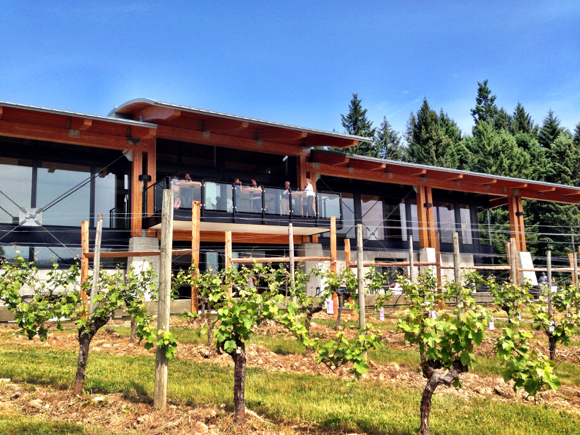
The impressive, new Blue Grouse, two storey winery and tasting room enjoy a south facing aspect overlooking the Cowichan Valley
It was over a couple of decades ago that I first went to Blue Grouse and met its founder, viticulturist and winemaker, Hans Kiltz. German by birth, Hans is a perfectionist, someone who never does things by half measures. And that is probably the main reason why Blue Grouse has long enjoyed a reputation as one of the Island’s most successful wineries.
Growing grapes on Vancouver Island has its challenges. Even in what might amount to a “good” year, say, in the Okanagan, there can be ripening issues on the Island—although there has been string of kinder, warmer growing seasons in the last few years.
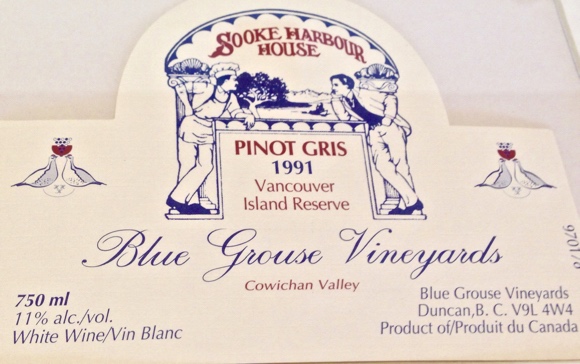
An early Blue Grouse Pinot Gris custom label, made for Sooke Harbour House, whose passionate owners, Sinclair and Frederique Philip, were key to the evolution of the fledgling region
After taking over a 12 year old trial vineyard in 1989, Kiltz persevered with several varieties; and made some of the best Bacchus, Siegerrebe and Ortega to come out of BC, in an era when all most people could care about was (over-oaked) Chardonnay. In particular he helped establish Ortega as the Cowichan’s flagship white grape; and thereby played an integral role in establishing the Cowichan Valley as a small but worthwhile wine region.
(The Harper Vineyard, that Hans and his wife Evangeline purchased, was one of three trials that the government and other interested parties initiated on Vancouver Island. The others were at Vigneti Zanatta and Glenterra, both nearby. In all, some 150 varieties were planted and trialed over several years.)
A new direction for Blue Grouse
In 2012, the Blue Grouse winery and vineyard were purchased by the Brunner family. The new owners embarked on a truly visionary expansion that has transformed the small estate winery, while managing to stay true to Hans Kiltz’s original vision, which has now grown to 31 acres.

Hans Kiltz (l) presents Paul Brunner with a framed collage detailing the history of Blue Grouse and the Kiltz family’s pioneering role
Paul and Cristina Brunner, and their daughter Paula-Cristina, are well along the path to shaping Blue Grouse into one of the area’s top destinations. They’re a globe trotting family with connections to Chile, Peru, South Africa and the U.S. And they’ve visited many of the world’s more prominent wine regions.
In skilled hands
For winemaking, Brunner turned to Bailey Williamson, who used to work with Road 13 Vineyards in the Okanagan. He, too, has very much grasped the need to work only with varieties that make sense for this sometimes borderline region. Williamson is a huge fan of the Cowichan Valley, which he identifies as one of the warmest regions on Vancouver Island, an ideal microclimate that is perfect for growing any number of varieties. But he insists it’s crucial for those to be the correct varieties, to allow him to showcase the vineyard’s true potential.
Not by coincidence, the grapes which will remain as the Blue Grouse stalwarts are those very same varieties that Hans Kiltz originally decided to work with—and which now have proven success throughout the valley. Early signs are that Williamsons’ Pinot Noir program will prove to be one of the region’s more impressive, with strong showings from 2012 and 2013. The new sparkling wine program, using Island grown varieties, also has plenty of potential.
A Fitting Tribute
All too often new ownerships choose to deliberately ignore what has gone before. Not so in this case. The Brunners are sincerely gracious in their acknowledgement of the the Kiltz family’s achievements. In fact, they have dedicated the entire mezzanine, along with its balcony overlooking the vineyard, as a tribute to the Kiltz family and their vision.
The winery itself is impressive enough, but this thoughtful gesture obviously flows from people with a real understanding of the kind of commitment it takes to start a successful winery from scratch. It’s heart warming to see Hans Kiltz getting the recognition he so well deserves after all these years.
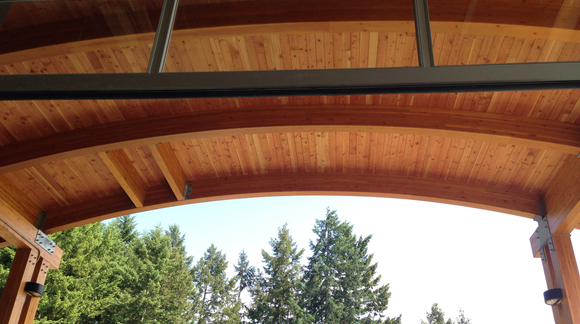
Blue Grouse curved roof over the crush pad echoes the overall design, with all local materials used in construction
Blue Grouse Architect Joe Chauncey says his design was inspired by the grouse itself, reflected in several features. The winery sports a roofline that mimics the curve of the bird’s head and neck, while even the natural tones of wood and stone are a nod to the Grouse’s distinctive plumage.
Chauncey’s clean, modern design makes the most of the south facing aspect looking down the vineyard and beyond to the rolling hills of the lush Cowichan Valley. Whether from the patio (which runs the length of the building), the main foyer or from the mezzanine, this beautiful structure with its expansive glass takes full advantage of the vistas and setting.
The Brunners are in no hurry to add more hospitality components, such as a boutique inn or full service restaurant, even though the new winery does have a commercial kitchen and excellent reception facilities. Paul Brunner says that may or may not come in time. For now, he says, the winery needs to solidify its reputation as a serious producer. However that already appears to be unfolding.
“We want to make great wines, not just good wines,” he says.
Blue Grouse Paula Sparkling. This wine, perhaps as much as any other I’ve tasted recently from Vancouver Island, is a really good example of what could be taking place on the island on a broader scale. It’s superbly textured, with just a little sweetness and is a shoo-in for seafood and Asian plates. $25, 91 pts
Blue Grouse Quill White 2013. A blend of Ortega, Pinot Gris, Gewurz and Muller Thurgau, over 50 percent estate grown with grapes from just north of Summerland, adds up to a well balanced workhorse of a blend with apple, citrus, stonefruit and definite mineral hints that can handle everything from sinple seafood to lightly spiced Asian plates. $17, 90 pts
Blue Grouse Dry Bacchus 2013. A refreshing departure from some sweeter styles, produced from the original vines on the property, this Bacchus offers up aromas of nettle and honey notes before a crisp but smooth palate with intense stone fruit, underpinned by mineral hints before a firm, dry finish. The perfect match for fresh oysters on the half shell. $20, 91 pts
Blue Grouse Pinot Noir 2013
Lifted red fruit up front followed by a well structured palate of cherry and strawberry notes wrapped in well integrated tannins, some savoury hints and earthy undertones, all well integrated with decent acidity and showing very definite varietal character. $24, 91 pts.
Blue Grouse Dry Black Muscat 2012. An esoteric survivor from the trial, this wine comes from what is likely Canada’s only planting. A much storied grape, with a history dating back at least a couple of millennia, this grape is often made as a dessert wine, and sometimes fortified. However, Blue Grouse makes it in a dry style, with aromas of lavender and Ribena / black currant, generous fruit and spicy notes. We also tasted it as a fun ‘cocktail’, with the Paula sparkling wine. 89 pts
This story, or a good part of it, also ran in Quench Magazine.
More at Blue Grouse
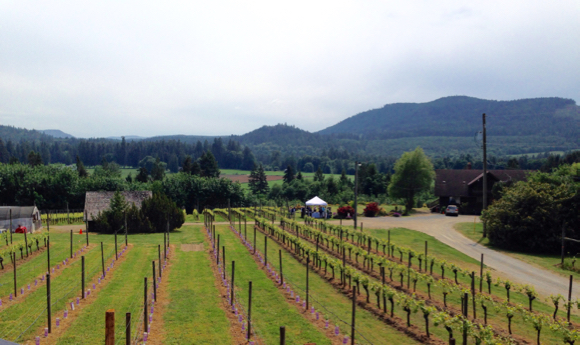
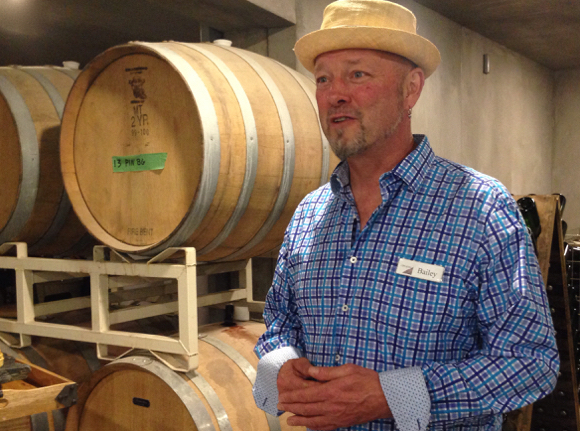
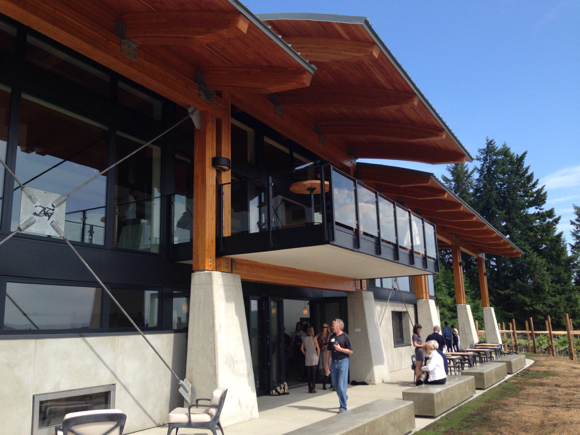

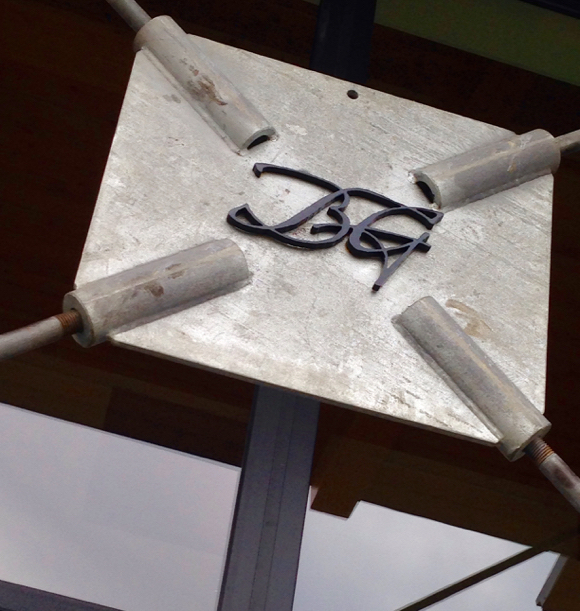
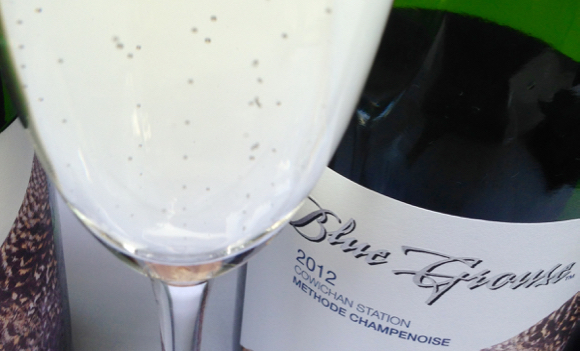


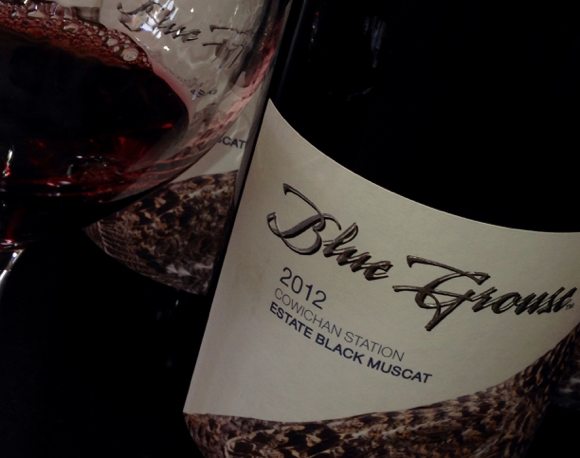
What a great summary and background of what is happening at Blue Grouse. It is so beautiful there and the wines are great – definitely on the must-visit list for Vancouver Island.
[…] which new owners the Brunner family have continued to enhance and celebrate. No surprise that Blue Grouse Estate consistently produces one of the Island’s best, that can be enjoyed year round—with or without […]
[…] pioneering legacy. The changes have been impressive. They include a state of the art, dazzling new winery, and a vineyard expansion that will eventually quadruple the area under vine. Pinot Noir will play […]